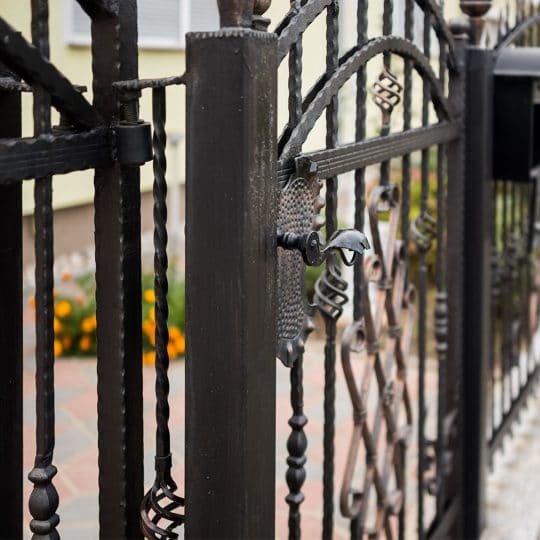Driveway Gate Design
A Few Factors to Consider

Secure. Stylish. Sets you apart. Sure, we’re talking about a driveway gate and what it could mean for your home. But how much have you thought about the logistics of designing a driveway gate? Here are some of the key components to remember.
Planning a Driveway Gate Pocket
One of the basic principles of driveway gate design is the pocket—the distance between the gate and the turn into your driveway. This distance is especially important for driveways off main roads. There should be a small pocket for a car to pull off into to help ensure traffic doesn’t back up behind someone waiting to get through the gate. If circumstances prevent a pocket and the gate must be against a road, the gate openings should be as wide as possible to help the vehicles get through safely.
Square Driveway Gate Design
When designing a gate, ideally it would be squared with the angle of the driveway path. This is especially important for swing gates since you wouldn’t want someone to accidentally hit the gate while turning into a curvy driveway.
The shape of a drive path will also influence whether the gate swings in or out. Typically a gate will swing in away from the street. But, if the driveway curves too much or is on an upward slope, it should swing out. Be sure the pocket is big enough to accommodate this motion.
Handling Driveway Gate Handing
Another factor that is easily overlooked is planning what side of the gate the hinges will be on. Once you decide if the gate opens in or out, it’s easier to choose a gate operator. If you need to pull or push a gate open the operator can stay inside the gate.
Some gates, like an articulated arm gate, can be set up to open inward or to outward. But opening outward requires the operator to be outside of the gate.
There’s so much to think about when it comes to driveway gate design. If you don’t know where to start or have questions about the process, contact the specialists at Security Five.